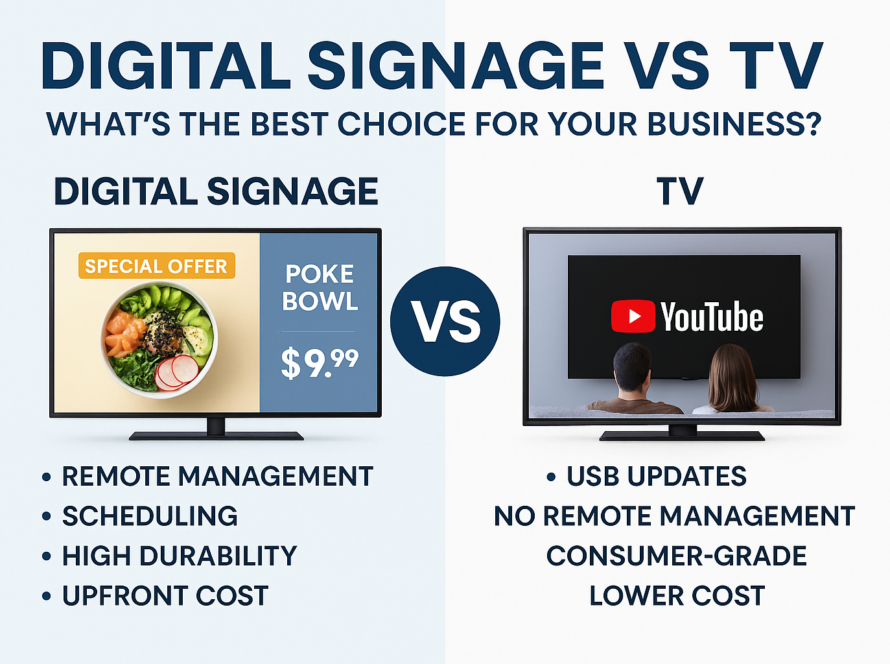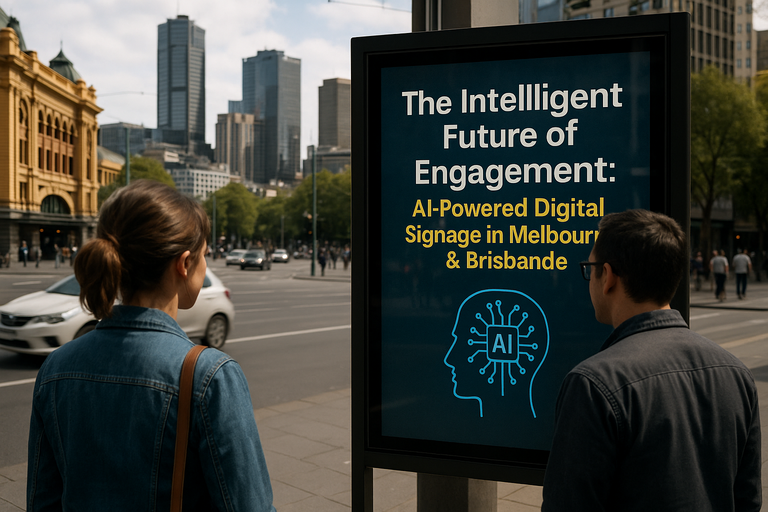Digital Display Signage with AI: A Guide for Australian Businesses
Digital display signage has rapidly evolved from static slideshows into a powerful communication platform shaping retail, education, healthcare, hospitality, and public spaces. At the heart of this transformation sits artificial intelligence (AI), enabling smart screens to adapt content in real time based on data-driven insights. For market context, see Statista’s global digital signage outlook.
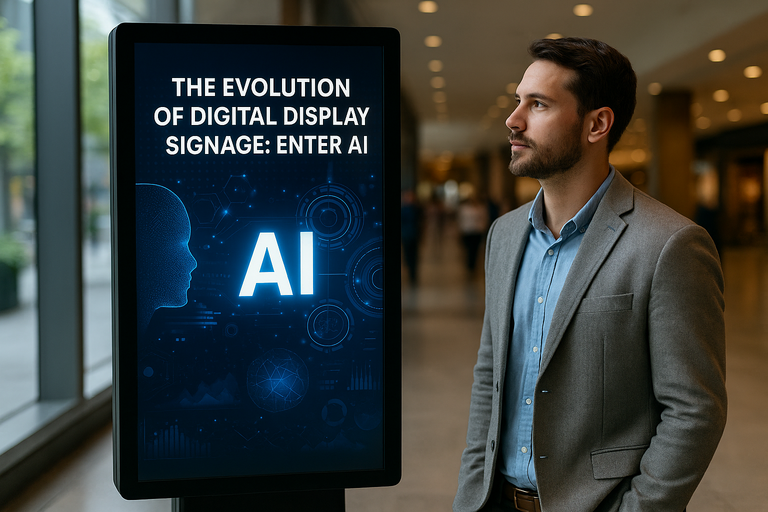
What was a passive canvas is now an intelligent interface. It personalises experiences, optimises creative for impact, and streamlines operations for organisations of every size. The journey from simple digital posters to today’s context-aware displays reflects necessity meeting innovation.
Once burdened by manual updates and generic content, enterprises now expect networks to be dynamic, responsive, and measurable. AI unlocks capabilities like audience analytics, real-time adaptation, predictive maintenance, and automated creative. This leap from fixed schedules to data-driven messaging has redefined what a display network can achieve in both customer-facing and internal environments.
The fusion of AI with digital display signage is not just a technical upgrade but a fundamental shift in how information is communicated in physical spaces. This article explores current use cases, key trends, and real-world examples—showing how smart systems lift engagement, efficiency, and ROI.
Sign Inspire, Australia’s AI-powered platform, epitomises this movement, giving businesses a seamless way to experience AI-driven transformation.
How AI Powers Digital Display Signage: Key Use Cases
Modern signage systems collect, analyse, and act on environmental and business data rather than serving as static billboards. Below are the most common ways AI elevates a display network.
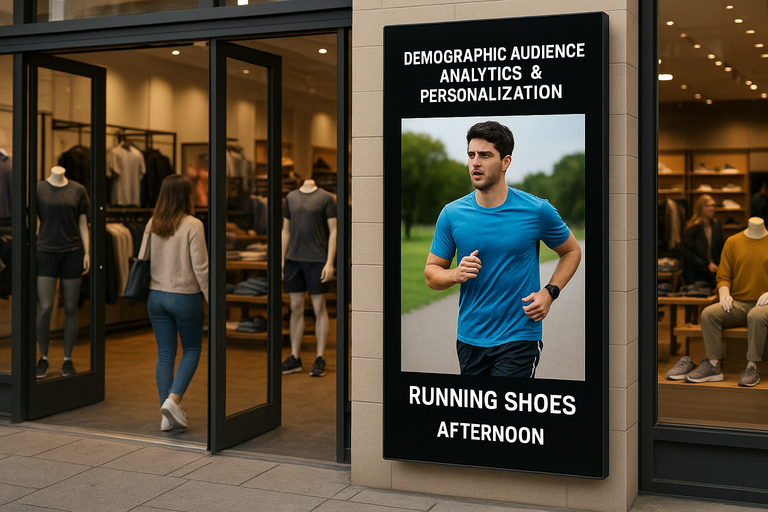
- Demographic Analytics & Personalisation: With privacy safeguards, sensors estimate audience profiles and tailor promotions instantly. A sportswear store might spotlight running shoes for teens in the afternoon, then comfort footwear for older shoppers in the evening. These data-driven screens boost relevance and conversion—see our retail guide.
- Contextual Dynamic Content: Integrations with weather, events, POS, or news let menus and promos adapt automatically—frozen drinks on hot days, comfort meals when it rains—turning each screen into a proactive sales and service tool.
- Predictive Scheduling: By learning from historic engagement and sales, AI picks optimal times for specific creatives. Office panels can surface bookings or holiday notices automatically, reducing manual work and improving consistency.
- Real-Time Impact Measurement: Attention metrics (e.g., dwell) inform creative and placement decisions. Explore Sign Inspire features to see heatmaps and performance views.
- AI-Generated Creative: Teams produce menus, seasonal promos, and branded visuals from a brief, keeping content fresh with minimal design time. See expanded image workflows.
Industry Trends Across Sectors
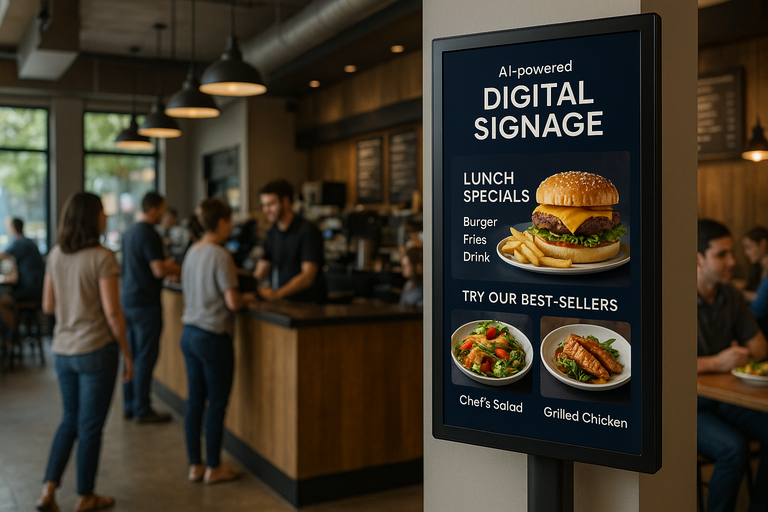
Retail & Supermarkets
Stores use real-time data to highlight soon-to-expire items, trigger flash sales, or optimise promo placement. Interactive mirrors recommend outfits based on behaviour or purchase history. Learn more in supermarket solutions and retail transformation.
Restaurants, Cafes & QSRs
Menu boards adapt to stock, time of day, and demand. During lunch rush, quick-prep items are prioritised to increase throughput. See restaurant solutions and AI image generation.
Education & Schools
Campus displays handle alerts, wayfinding, event listings, and staff updates. Explore education use cases and AI teacher training.
Healthcare & Clinics
Queues, check-ins, and wayfinding are simplified while wait-time perception drops. More at healthcare signage.
Corporate, Offices & Smart Cities
Workplace screens act as communication hubs: news, achievements, personalised wayfinding, and automated room schedules. For city infrastructure, screens deliver guidance and alerts in real time. See city examples.
Digital Display Signage: Essential Hardware
- Brightness: 2,500+ nits for outdoor/direct sun; 500–700 nits for bright indoor areas. See outdoor guidance.
- Ingress Protection: Outdoor units should target IP65+ for dust/water resistance.
- Operational Hours: Commercial panels are rated for 24/7 use; consumer TVs are not.
- Lifespan & Warranty: Business-grade displays often include 3–5 year warranties and last 8–12 years. Compare display vs TV.
- Connectivity: Stable Ethernet/Wi-Fi plus API-ready players for reliable updates and management.
Measurement & ROI
- KPIs: Define engagement, conversions, queue reduction, or intranet visits via QR.
- A/B Testing: Compare creatives to find winners and auto-promote.
- POS Integration: Tie promos to sales for concrete impact.
- Audience Analytics: Use anonymous dwell/attention trends to refine content and placement.
- Operational Savings: Fewer print runs, faster updates, automated schedules.
Privacy & Compliance in Australia
- APPs: Follow Australia’s Australian Privacy Principles for transparent, secure data handling.
- GDPR/CCPA: For global audiences, honour consent, minimisation, and access/deletion rights.
- Anonymisation by Design: Use aggregated, non-identifying analytics—no stored PII.
- Data Retention & Security: Limit retention; secure data with encryption and access controls.
- Accessibility: Check contrast, sizing, and motion per W3C WCAG.
Implementation Checklist
- Define Objectives: Sales lift, internal comms, wayfinding, etc.
- Select Hardware: Commercial-grade panels and compatible players.
- Choose a Cloud CMS: Dynamic rules, analytics, and generative tools.
- Integrate Sensors: Anonymous audience or environmental inputs where appropriate.
- Network: Ensure reliable connectivity at each site.
- Content Strategy: Leverage templates and AI to keep creatives fresh.
- Placement: Target high-traffic or natural pause points; consider professional installation.
- Privacy: Communicate practices; favour anonymised analytics.
- Training: Teach teams the CMS and analytics workflows.
- Optimise: Review performance and iterate continuously.
Real-World Results
Australian brands report double-digit lifts in featured-item sales from context-aware screens. QSRs reduce perceived wait times while optimising upsell; universities broadcast alerts in seconds; clinics cut confusion with intelligent queue management.
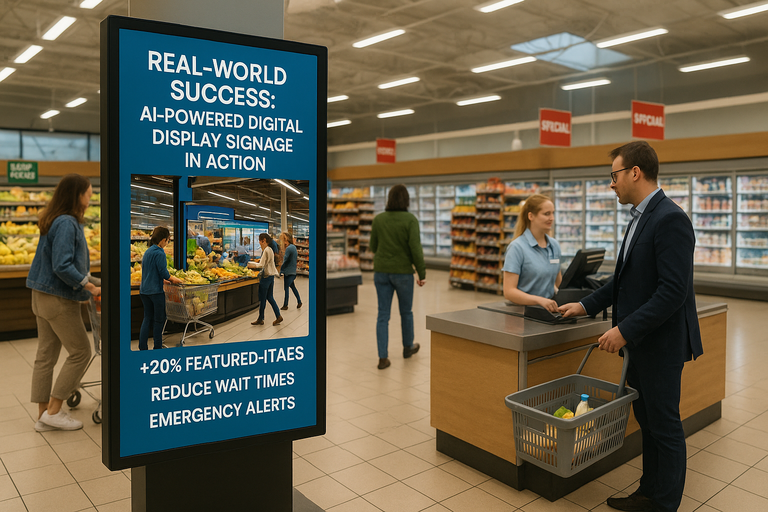
The pattern is consistent: AI-enabled networks lift efficiency, engagement, and ROI. For sector specifics, browse Use Cases or see the latest in the News archives.
What’s Next
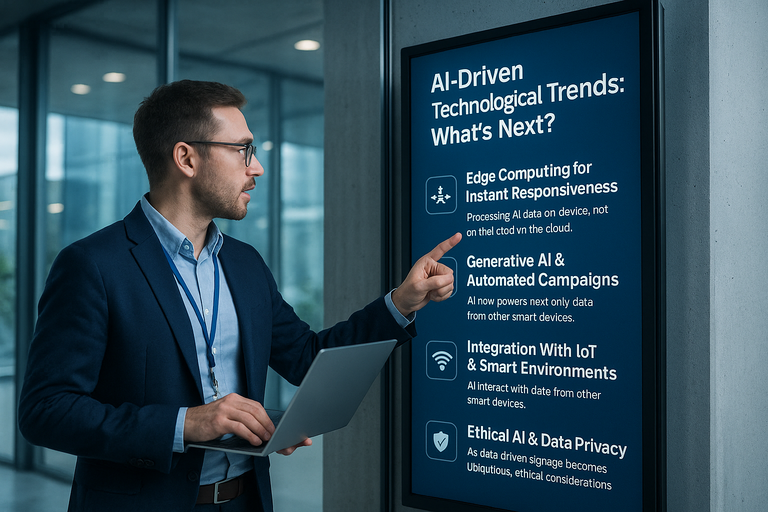
- Edge AI: On-device processing for low latency and privacy.
- Generative Workflows: Automated layouts, copy, and hyper-local variants.
- IoT Integration: Screens reacting to building and crowd data.
- Conversational Interfaces: Voice-based queries and wayfinding.
- Proactive Displays: Predictive content before the need is expressed.
Best Practices
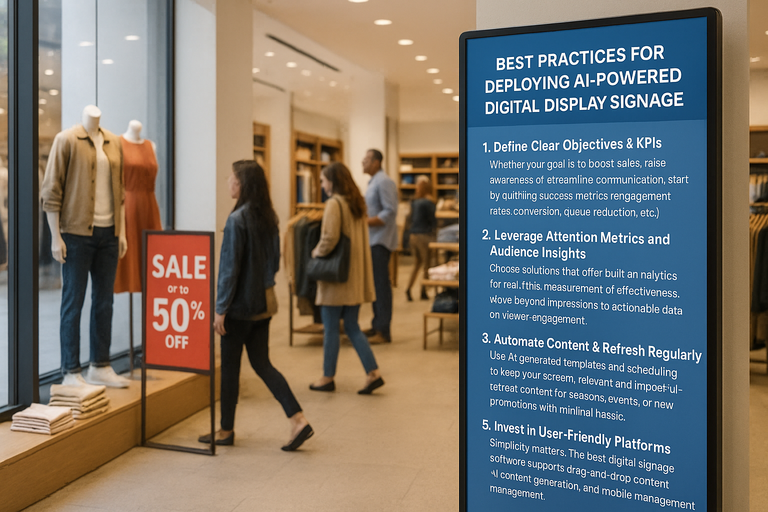
- Set KPIs: Engagement, conversions, queue reduction, etc.
- Use Attention Metrics: Optimise based on real behaviour, not impressions.
- Automate & Refresh: Schedule seasonal/events content with templates.
- Privacy by Design: Anonymised analytics and clear notices.
- Prioritise Usability: Drag-and-drop building, AI assistance, mobile control.
FAQs
What is AI-powered digital display signage?
It uses AI so screens adapt content in real time based on audience, context, and predictive signals—delivering relevant communication.
How does AI lift ROI?
By optimising creative and timing, automating schedules, and providing analytics that tie to outcomes like sales or service levels.
Is privacy protected?
Reputable platforms use anonymised analytics and comply with APPs/GDPR. No PII needs to be stored.
Who benefits most?
Retail, restaurants, clinics, campuses, and offices—anyone needing engaging, measurable communication.
Is implementation difficult?
With a cloud CMS and templates, setup is straightforward. Planning hardware/network and training ensures smooth operations.
Conclusion
The intersection of AI and digital display signage represents a strategic leap forward. With analytics, generative content, contextual rules, and continuous feedback, screens become a central channel for timely, relevant communication that audiences notice—and act on.
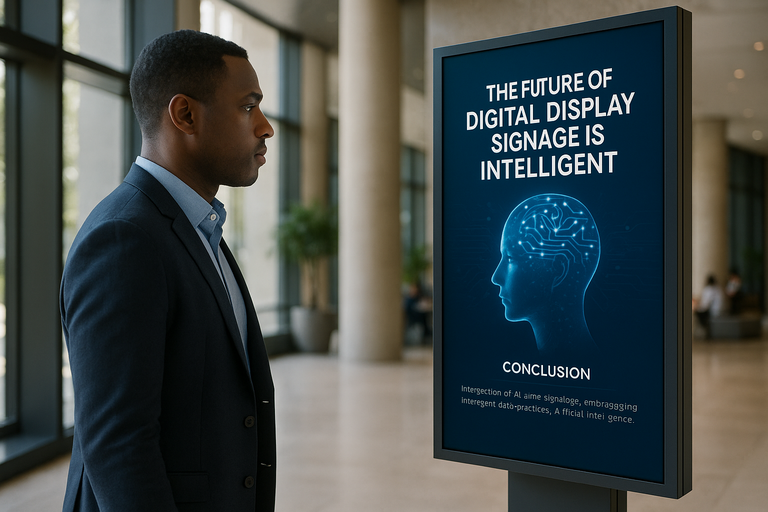
As systems grow smarter, transparent data practices and ethical AI are essential. Organisations that invest in adaptable, measurable networks will turn every screen into a high-impact asset. Explore features, browse solutions, and dive into Digital Signage Blogs to accelerate your strategy.

